
| Skip introduction and take me straight to today's installment. An introduction to American Impressions: I was the luckiest reporter on the planet. I’d proposed to my editors at the Lakeland Ledger to send me across the country and write an essay on each of the 50 states. They went for it, handing me two credit cards, a camera and the vehicle of my choice--a Chevy Venture I rigged up with a library and a bed. 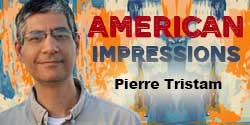 I spent 15 months alone on the road, logging 60,000 miles and four times as many words. The result anchored a weekly section throughout 1999, counting down to the millennium. What you’ll read here between Christmas and the New Year, when FlaglerLive traditionally pulls back on hammering you with hard news (and hammers you instead with pleas to support us), are the first few installments of that journey. While my reporting at the time forms the basis of the work, most of what you’ll read has not been published before. The rest has been extensively reworked and updated. I spent 15 months alone on the road, logging 60,000 miles and four times as many words. The result anchored a weekly section throughout 1999, counting down to the millennium. What you’ll read here between Christmas and the New Year, when FlaglerLive traditionally pulls back on hammering you with hard news (and hammers you instead with pleas to support us), are the first few installments of that journey. While my reporting at the time forms the basis of the work, most of what you’ll read has not been published before. The rest has been extensively reworked and updated. I was not traveling to discover myself or get away from myself, I was not in search of America or of eternal truths. I’m not equipped for that sort of thing, being rather shallow, and I wasn’t going to pretend to understand a state or even a village from a passing week. Nor is this a travelog about food or fun places to visit or quirky people I met along the way. I was just a reporter, picking up stories here and there, choosing for each state one or two themes that struck me as telling about that part of the country, and hoping to build a mosaic of an America every inch a wonder and a puzzle of joys and sorrows to an immigrant hopelessly in love with his adopted country, despite and still. I hope you’ll enjoy the journey. --Pierre Tristam Previous installments:1. Introduction: The Day Before America | 2. Heartland | 3. The Road | 4. Alaska: The New Suburb | 5. Alaska Highway | 6. Montana: Backtracking Lewis and Clark | 7. Montana: Ghost of the Prairie | 8. North Dakota: A Life in Missiles | 9. South Dakota: Crazy |
It had been snowing, icing, mudding for hundreds of miles. I was in a stupor from concentrating, guessing the roadbed’s whereabouts between cliffs and ravines. I stopped for gas at Mile 1147, one of the sparse oases in the Alaska Highway’s desert of convenience.
There were two drab structures outlined in the same mud spatters that had caked my Venture. One looked like a restaurant, the other like a gas station. I opened the door to the station. The dingy cold even inside reminded me that I was way closer to Siberia than to the Lower Forty Eights. A few fish hooks hung from the wall, a net, lures. The smell of something I’d frequently pick up in these northerly posts also hung from somewhere, more like mirages for the senses: Kerosene. Bacon. Ass. Rosemary. Paperbacks that had known better decades lined a shelf: Harold Robbins, a book called The Affair, Roots. Fifty (Canadian) cents apiece. Oddly for these oases of primal needs, I did not see porn–until it appeared in person, an Arctic twist on the Lady of Fatima.
She was a dirty-blond in her early thirties or late fifties with teeth also mapping the nearest dentist to Siberia. She wore overalls fashioned after the look of the building. Without a word she unclasped the gas cap, started filling up the Venture’s tank, washed my windshield, wiped the headlights, checked for cracks. It was a full service station. Unlike her more languid equivalents in New Jersey, where you’re equally forbidden from handling the nuzzles under pain of rendition to a Saudi prison, she was full of energy.
Unbidden, she found another latch and opened the hood, palpating the ticking metal coils. She asked me something about fluids. I had no idea what she was asking and she didn’t give me time to answer anyway. I was mesmerized by this apparition of efficiency as brutal as the landscape. She’d unclasped me for the dweebish know-nothing I was and walked into the station to ring me up.
Recovering, I asked her if it was going to snow this way the rest of the day. “The sun is out,” she said. “Look around.” I did, for form’s sake. It didn’t seem to be shining anywhere in the Yukon. “Ahh, why are you guys so negative?” she said. I don’t know who she was lumping me with, but it wasn’t good company. She invited me over to the other building for coffee.
The Braves were playing the Cubs in a division series. Satellite TV, she quickly said. “Comes in good, eh? What else can you ask for? Satellite TV, live band, wood stove, coffee, good-looking women.” Her imagination was as full-throated as her laugh.
I poured myself a cup of self-serve coffee and sat down near the wood stove, disbelieving. She was not joking about the live band. Two electric keyboards, a saxophone, two huge speakers, and sight of sights in the depths of the Yukon: a beautiful transverse flute laid across the top keyboard. Where do these musicians come from? Barb Chamberlin (not Chamberlain) had played there the night before and was playing again tonight. My apparition wanted people to stay and hear her. Barb Chamberlin, xeroxed and leering above cleavage more silicone than selenium, also begged people to stay from every wall in the restaurant.
A trucker walked in and immediately asked what was around the dirty-blond’s knees.
“Knee pads,” she said, trailing the beginning of a laugh.
“For what?”
“For getting on your knees!” The laugh is full, hearty again, a heavyset laugh that echoes around the hills with a knowing wink to the only universal story on the planet that September, compliments of Bill Clinton’s libido. For a moment, the woman is more Monica than Fatima and the trucker can’t help himself, fumbling with possibilities. “No,” she corrects, surely noticing she might’ve ignited a spark plug too far. “I was working on my water heater.”
The heater was a converted 55-gallon drum, reinforced and painted silver. I fueled up on warmth and coffee next to it, drinking in this burst of life after two days of solitary driving, and reading Mile 1147’s lyrics to locals on the walls. A hand-written note in black marker on orange paper advertised “Billy Bad Ass Special Rye Kahlua Milk, $3.50.” Canadian flags big and small hung everywhere. A Mae West poster hung on the wall below the bar rim, next to retro ads for “Hires, the Genuine Root Beer” and “Olympia Beer,” next to pastel paintings of Indians looking comfortable inside their furs, their expressions mimicking models who condescend to smirk rather than smile in Versace ads. But I hadn’t driven my quota that day and the sun was falling. I left reluctantly in the eighth inning, the Braves, those other condescending Indians, ahead 7-1.
*
The Alaska–or less imperiously, the Alcan, for Alaska-Canada–Highway is a twilight zone of the beautiful and the bizarre, an endless wormhole where the unexpected and the sublime are so common that they become monotonous, where the emptiness is so complete that you can feel like the last person on earth. The expanses of Texas and Montana have nothing on this place. Drive over a cliff and you could become part of the eternal tundra, now a lot less eternal thanks to the warming climate: you’re more likely to rot than freeze these days.
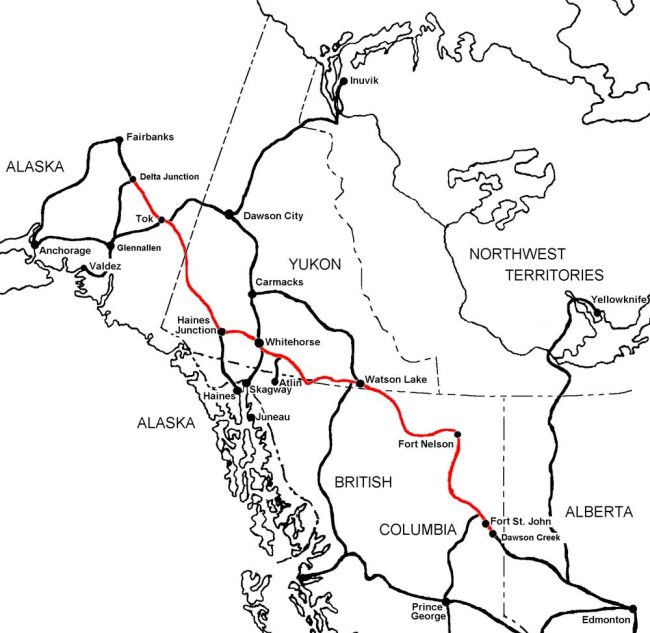
The road can feel like an illusion. It’s not a highway but a two-lane cobble of 1,390 miles from Delta Junction in Alaska to Dawson Creek in Canada’s “Super, Natural British Columbia.” It’s another 800 miles to the border with Montana. Add to that the 500 miles between the end of the highway and Homer, where I’d caught the ferry to and from Kodiak, and it’s a combined distance longer than from New York to Los Angeles (one way), on approximately two-lane roads mostly paved but at times on the sneering side of passable. You quickly discover that the Alcan has as many definitions for “paved” as Eskimos are said to have words for snow. You’re lucky if you can go 45 in stretches–in good weather. And you’d better respect the hierarchy of the road, especially in the offseason, when you’ll feel like an intruder. Truckers are Vikings. Minivans are roadkill.
I’d lucked out with good weather on the week-long drive up to Kodiak, when the most snow I saw was atop the St. Elias mountain range in Canada’s Kluane National Park, though snow was on the descent, the white line closer to a village below than to the top of the mountain. The return drive a week later was another story. After nearly missing the last ferry of the season from Kodiak Island to the mainland–I had mistaken my departure date by a day, discovering my mistake by chance on hour before the ferry left–I landed in Homer on September 29 with a storm of alternating rain, snow and ice that seemed as big as Alaska and that harassed me the whole week and way to Edmonton.
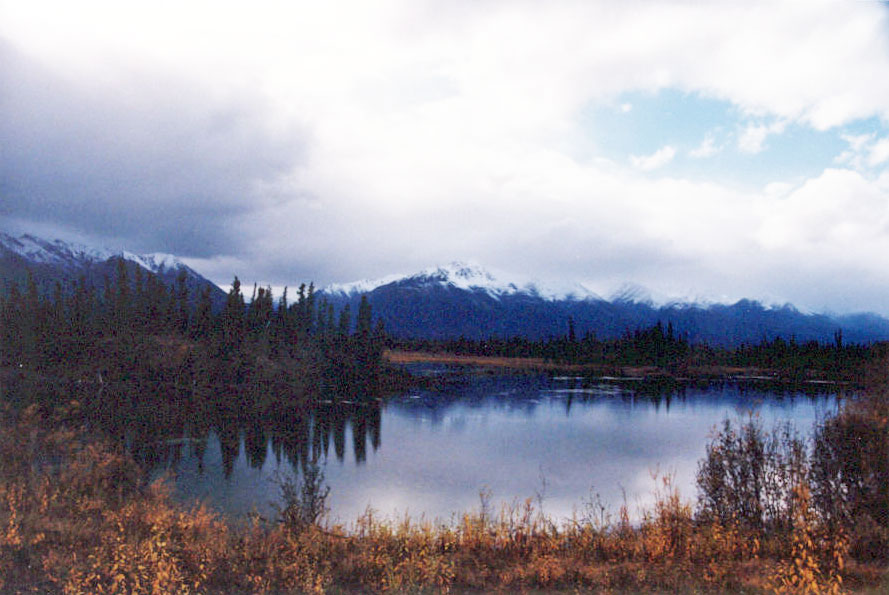
At first there were just rare, thin bands of snow like discarded scarves at roadside. Then the road became a guess, a “Census Designated Place,” as the federal government calls clusters of homes and businesses in these parts, named for statistical purposes only. (Not just in these parts of course: Beverly Beach is a census-designated place. But the 10 largest ones are in Alaska.) The places are otherwise too small and undefined to be called towns.
The lack of boundaries, in landscape and in people, is one of the region’s great perils and attractions.
The highway didn’t exist until 1941. Travelers went to Alaska by ferry from Seattle, though the idea of a highway had its first champion in Clyde Slim Williams in the 1930s, when he spent five months dog-sledding down the path he thought should trace the future road. He did it again in 1939 with a motorcycle. During World War II Washington worried about Japanese designs on Alaska, and probably looked beyond the war at Soviet designs as well. The distance from the Russian mainland across the Bering Strait to Alaska is shorter than the distance from Palm Coast to Jacksonville. So Williams’s fancy became geopolitical necessity.
In an incredible feat of engineering and the collective stamina of 10,000 soldiers and 2,000 civilians, the U.S. Army Corps of Engineers built the highway and a parallel pipeline in eight months and 12 days at a clip of several miles a day, cutting a swath of 18 to 24 feet through a world of virgin forest, tundra, swamps and muskeg, those northerly bogs of decomposition that stagnate on top of impermeable permafrost.
The temperature could lock in at minus 50 for weeks in abbreviated daylight or boil with mosquitos and humidity through summer’s endless days. Machinery broke down. Bears raided the food supply. Bulldozers sunk through muskeg. Like Lewis and Clark a century and a half before and a few parallels south, the men grew dependent on local Indians to bail them out of food shortages and guide them through the bog. Thirty men died building the road, 15 of them in a ferry accident. The Army Corps became Corps of Discovery on steroids.
Here’s where the boundaries of all things Alcan blur again, whitewashing a less memorable reality with a romantic narrative of faceless heroism.
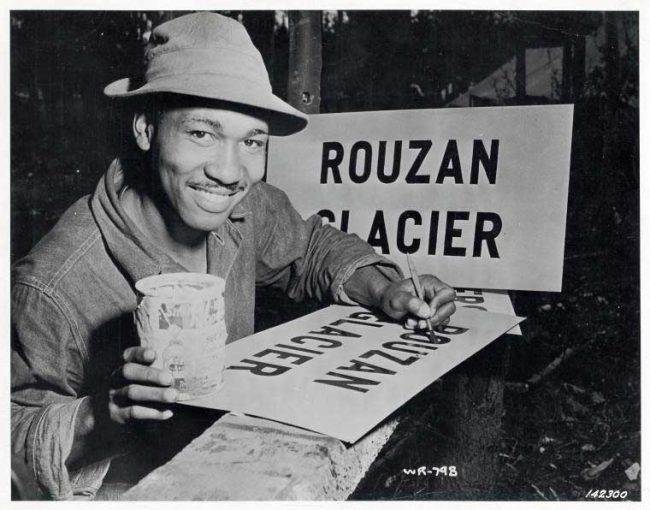
A third of the men who worked on the highway were Black. They were sent there because the Army took them for unreliable idiots incapable of critical duties at the front. “The belief that blacks and whites could not, and would not, fight alongside each other,” Kenneth S. Coates and William R. Morrison wrote, “kept most blacks from frontline service. But blacks volunteered in large numbers, anxious like other minorities to prove their loyalty, and eager, as were many other poor folk, to secure the regular pay, clothing, housing, and food that went with the army.
“The army had little difficulty deciding what to do with the thousands of black men under its control. Considered, until well into the war, unfit to fight for their country, black soldiers were assigned in large numbers to engineering and transportation units, where they provided much of the construction and logistical support necessary to the Allied war effort.”
They were the Alcan’s mules. Initially they were poorly clothed. They were segregated from white workers in conditions fit for something out of Erskine Caldwell, until officers figured out that more dignified treatment meant higher morale, better workers, a faster pace. Conditions improved. When it came time to build a bridge over the Sikanni Chief River, white engineers figured on a two-week job. Black troops bet the engineers they could get the job done in four days. They got it done in three and a half. There was no longer any question who were the heroes of the Alcan.
When the road was done, two white and two Black enlisted men held the ribbon at the ribbon-cutting.
You won’t read of that legacy in the overwhelming majority of accounts about the Alcan. You won’t see markers memorializing its laborers, not on the highway, anyway. A 1944 Army film, greatly valuable for providing authentic visuals of building the impossible, makes one reference to the mixed ranks, without reference to the ratio but with a hint of patronizing surprise: “There were colored as well as white troops. Both did their full share.” (A public television documentary of the highway, partly funded by the Alaska Division of Tourism, is just as valuable.)
A 32-page National Geographic story on the Alcan on the eve of the 50th anniversary doesn’t once mention Blacks’s role. A municipal park in Anchorage dedicated a few benches to the Black troops in 2003. The Army itself buried its initial assessments of Black soldiers. “I never, never, never in God’s world, dreamed that 50 years later I’d learn they’d taken me for an imbecile,” Richard Trent told a reporter in 1992, after visiting an exhibit in Fairbanks marking the 50th anniversary of the highway.
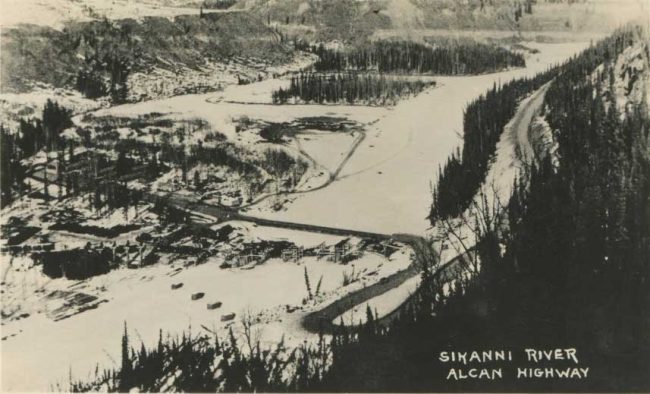
It was through that exhibit that Lael Morgan, the late professor of journalism at the University of Alaska at Fairbanks (she died in August 2022), exhumed long-buried accounts of how much the Alcan owed its existence to Blacks. That history remains a rare footnote but for the efforts of the Alaska Highway Memorial Project. The project had hopes of funding a bronze and marble sculpture honoring the Black soldiers for the 75th anniversary of the highway in 2017. It doesn’t look like it succeeded. The victims of the ferry disaster were memorialized in 2008, but that monument is also silent on the Black experience.
If highways, like cities, had sisters, the Alcan’s would have to be the Kolyma Highway not far to the west. Stalin had his gulag’s slave labor build the “Road of Bones” in the 1930s, at an immense human cost, to get at gold and tin, and to imprison 1 million people in the Kolyma region’s death camps, the most forbidding of the gulag. If you were to drill a second Alcan highway of 1,700 miles from Delta Junction, going due west and across the Bering Strait, you’d reach the Kolyma graveyards.
There’s no comparing the Kolyma’s killing fields to the Alcan of course. But some similarities prevail, especially today, with both countries choosing to bury the two highways’ legacies. In the United States it’s more negligence than malice. In Russia, it’s reactionary amnesia.
The Mask of Sorrow is a memorial to the gulag at the Kolyma’s end point, and R504 Kolyma Highway, like the Alcan, is now its own kind of tourist attraction, if not nearly as traveled. The few who take R504 do so to pay homage and remember those they lost. But now the larger majority of Russians look at the Kolyma with nostalgia for Stalin. He’s considered a “great leader” by most, his mass murders rationalized or forgotten.
The Alcan is mostly celebrated as an engineering triumph, and even that legacy is slowly getting buried under newer, thicker, wider layers of asphalt, the way I-70 eventually eclipsed the ruts of pioneers’ wagon trails. But the Alcan’s greatest triumph is still muted. It was a “road to civil rights,” as a Jean Pollard poem did in 2012: The military’s integration in 1948 went through the Alaska Highway.
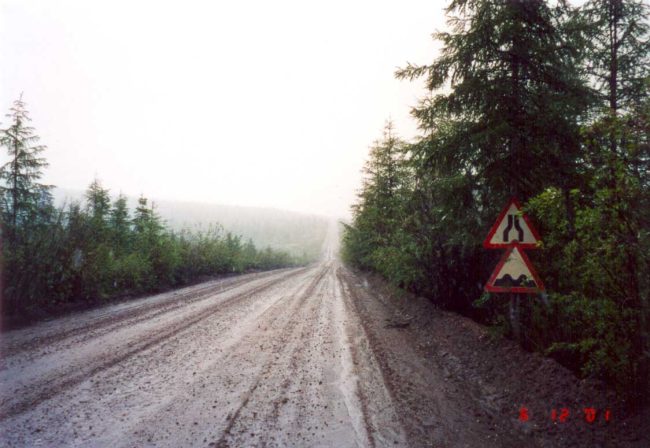
*
It wasn’t much of a road when the Alcan opened in November 1942. Its single lane of ungraded mud and gravel and makeshift bridges over 200 streams connected a string of airfields and gave Army trucks access to Alaska’s defenses until the Canadian government took over the road and began upgrading it after the war. It’s been shrinking considerably since. It was shorter by about 200 miles when I traveled it, compared to its original length, as road crews year after year eliminated a hairpin curve here or blew through a mountain there to reduce grades that could reach 6 and 7 percent.
Its hazards these days have more to do with somnolent winnebagos and careless truckers — it claims about 20 lives a year — than with wilderness. The highway is a caravan of tourism in summer, keeping busy hundreds of small roadside businesses — gas stations, RV parks, motels, gift shops, rock shops, repair shops, restaurants, museums, helicopter tours, rafting, fishing, reindeer-watching, a day’s gold-digging or a hundred other ways to “snuggle up to history,” as one sign put it.
It’s a different story in winter. It falls quickly in September. Boundaries disappear, as the road often does. Truckers and natives know it by instinct. The rest of us, we’re just idiots trying to prove something.
I approached the highway with some dread from listening to people who had traveled it and reading books about it. One book devoted 35 pages to vehicle specifications, tools and equipment to bring for the crossing. Its hundred-item checklist includes spare headlights, more than one spare tire, standard pliers and long-nosed pliers, a wire-splicing tool, a rivet gun, a vehicle tow strap, an “assortment of sheet-metal screws, nuts and bolts,” 50 feet of nylon rope — quarter-inch, by the way — and several pages-worth of gear lists that make an Outward Boundsman swoon. I threw the book away and relied on my Chevy dealer’s promise that the van I was driving was up to any average challenge. I didn’t even take a spare tire, other than the required doughnut below the chassis. The Venture proved sufficient.
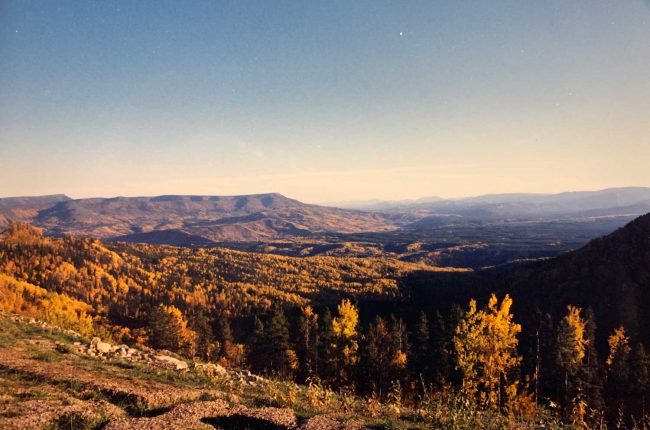
The wilderness is astounding and the isolation crushing, once you make it past that thin ribbon of convenience along the way. I drove up after the summer season when I was often the only driver for miles in either direction. Eruptions of autumn colors could blind you to the suicides and stripper joints and battered women’s groups and transience and inbreeding that animate the culture along the road, although any conversation past “hello” with anyone living there explains why a quarter of the people move every two years, and why “The Arctic trails have their secret tales/That would make your blood run cold,” to quote poet Robert Service. In Tok, one of those census-designated places just inside the Alaska border from the Yukon, a man’s idea of conversation at breakfast was to tease about an Ebola breakout.
The wilderness can be dull. There are stretches of hundreds of miles, especially closer to Dawson Creek, that are as numbing as the drabness of Ohio, though it’s here that you finally realize that you’ve never experienced this kind of emptiness on the continent before. You’ve never crossed such long distances without the coercions of roadside convenience or the trespass of sprawl. This land is not your land, and it was not made for you and me. It’s its own end. It begins to feel as if you’re as close to a vacation from humanity as you’ll know.
But that, too, is an illusion. Those truckers barreling up and down the Alcan aren’t empty. They’re emptying the wilds of their wilds, drilling, clear-cutting, blasting, making moonscapes of virgin land for lumber or minerals or oil. The Athabaska tar sands of Alberta, south of the Alcan, cover an area the size of Florida and give Canada the world’s third-largest oil reserve. Producers get at them by strip-mining every square mile, turning Eden into “the world’s most destructive oil operation.” We hardly hear about it because it’s as out of the way as it gets, but we’re the ones guzzling it. We import more Canadian oil than from all other countries combined, most of it is from tar sands.
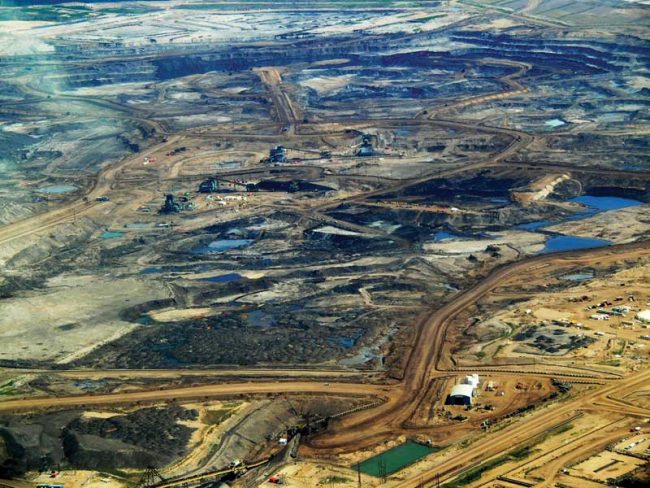
Further north, extraction changes character. It’s less destructive, until you factor in the destruction of climate change, which is most pronounced in the Arctic. Permafrost starts about two feet below the surface and can extend as deep as 3,000 feet. Scientists were warning of warming permafrost as far back as 1986. It’s been melting, collapsing the landscape above, creating giant craters, wiping out lakes. The most primitive and remote expanses of the state are being contaminated by nothing less common than Cleveland-like pollution, and looping back into the atmosphere methane by the millions of tons that had been locked in the land for tens of thousands of years, further greenhousing the Arctic and accelerating the melt.
The Alcan is not a drive back in time, back to something primitive or pristine that’ll always be there. It’s more of a last-chance pilgrimage, like the trip the naturalist Edward Abbey took through Glen Canyon country before Glen Canyon Dam in 1966 submerged it with Lake Powell. “Original sin, the true original sin,” he’d written of that trip, “is the blind destruction for the sake of greed of this natural paradise which lies all around us–if only we were worthy of it.”
But people keep coming to live along the Alcan, and leaving. It’s an escape, an adventure, a self-delusion, a living. Their presence makes light of romantic pretensions projected on the Highway. The highway limns settled country, its quirks and warts more apparent only because it isn’t settled enough to be prissy about them.
*
“Things don’t grow well at minus 55 celsius, that’s why people are so short here,” Bryan Burger is telling me between tips about Alcan country, like staying away from the hydrogen sulfide getting drilled for all around. “If you catch a big enough whiff of it, it can kill you.”
Burger had left a job as a kitchen designer in Regina, the capital of Saskatchewan, several years before to run a store and camp site at Mile 143 of the Alaska Highway, a settlement called Pink Mountain. (The miles accrue from south to north.) It was a getaway, like it so often is with people moving to nowhere. “Maybe it was a midlife crisis,” he said. “I don’t know. Everybody is supposed to experience at least one in their life, maybe it was mine.”
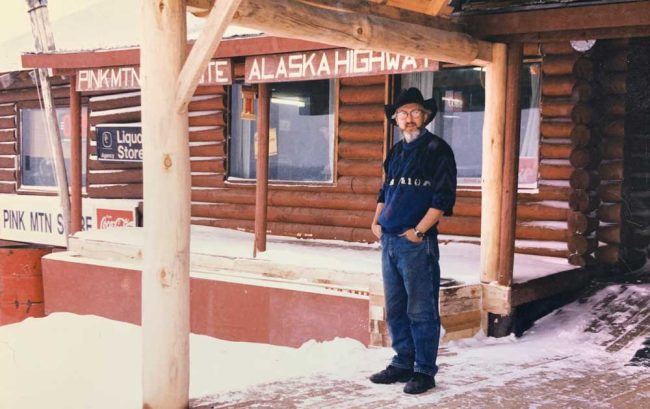
I’d stopped in for the night on the way north. Burger’s place was officially closed after 9 p.m., but the doors never actually closed until much later. He was half-practicing with, half-teaching guitar to two younger men who’d grown up in the area, Curtis Clampitt and Terrence Clark. Between the three of them three-fifth of the local economy was represented — tourism, road work, natural gas drilling. No loggers and ranchers to represent the fourth and fifth. The good money in each industry, the virtual absence of crime, the sense of community all along the settlements of the highway compensate for the isolation.
We talked of homeschooling and correspondence courses based in Fort St. John, by necessity the favored way to an education: you get yourself a neighbor to proctor and sign your exam then send it in. You put in your school time after work, finish at your own pace between $12 to $14-an-hour work on the pipeline plus overtime. Truck drivers get $16 an hour. (This was all Canadian dollars in 1998, what would be roughly double that in 2022). We talked of rodents getting shot, skinned and cooked, of muskeg (“you basically break through it and you’re sunk”), ranching and what Burger described as “the nomenclature of the road system”–the way mile markers are the scriptural chapter and verse of the landscape.
We talked of winter’s 12 feet of frost, of the fragility of permafrost, of stereotypes that plague the region, to their chagrin. “There are some people that you could almost qualify as hillbillies,” one of them says of the locals before Clampitt fills me in on the wealth of wildlife: “Grisleys, black bears, 20 miles west–mountains, wild sheep and goats, moose, elk, caribou, mule deer, white tail deer, more wolves than you can shake a stick at. We have the last free-roaming herd of buffalo left in North America, over 5,200 right now. They did a study this spring. They didn’t count the calves.” North America once had 30 million bison, a large portion of them in British Columbia.
“Grisleys are basically shy,” Burger reassures me, knowing by then I’d be spending the night in his campsite.
“It’s the blacks people need to worry about,” Clampitt said, meaning bears, of course. Wolves will attack you, too, he said less reassuringly. I was in for an interesting night. “A friend of ours lost eight horses to wolves one winter.”
The conversation returned to the region’s prevailing culture: isolation.
“If people can’t handle the isolation, it shows up fairly soon,” Burger said. “A lot of people will turn up the alcohol. That’s one of the problems in the north that’s probably comparable to problems in the south. People who move up here a lot of time maybe last a season or two years, then they go back south. For people who are born and raised up here it’s not isolation, it’s home.”
The suicides and batterings are not necessarily more frequent, just more public, the fodder for bad news traveling by word of mouth, truckers’ mouths usually, up and down the highway and maybe getting amplified as it travels, like a hurricane picking up fuel over the ocean.
“My heart has always been sort of more suited to living in the country than in the city,” Burger said, “and when the opportunity arose to do this I jumped on it, hopefully to live here happily ever after.”
“You’ll get sick of it,” Clampitt promised him.
“It’s been three years and I love it more every day.”
“Believe me, you’ll get sick of it.”
After Burger gave me directions on how to hook up my van with electricity, we said our goodnights and I drove up the Venture to its spot on a ridge surrounded by conifers. That morning I had woken up depressed in a cubby-hole of a motel room, and here I was on one of those narcotic high that would occasionally relieve the despair that routinely accompanied me. (If you’re wondering: the most drugs I took on the 15-month trip were a few capsules of Tylenol, having an almost Christian Scientist aversion to drugs of any kind, including Christian Scientists. The one exception was the morphine drip I found myself attached to in a Las Vegas hospital months later, when I was recovering from one of the several kidney stones I quarried across America.)
The temperature was at the freezing mark. I left the van’s sliding door open, drawing warmth from a 100-watt incandescent bulb and a pipe, oblivious to bears. The trip’s tensions and deadlines, the delays on the road, the construction, the enraging drivers, the cussing, the unknown, the doubts, the fears all dissipated for a while. I was able to download three days’ worth of emails, and it was there, in the vastness of Canada’s nowheres at the midpoint between the two American borders and with a slow-motion connection that required several minutes to complete, that I downloaded the Starr Report in full and unfortunately started reading it. “Ms. Lewinsky testified that…” “she unbuttoned…” “he touched…” “I think he made a joke * * * that he hadn’t had that in a long time…” and so on. The spell was broken. It was another obliteration of boundaries.
*
A parody of the highway’s remoteness is the “Signpost Forest” at Watson Lake, a small mining and logging town on the border of the Yukon and British Columbia. Started in 1942 by one of the American soldiers building the highway, with a single signpost, the forest numbered 41,602 city signs when I stopped in September 1998. It’s double that near the end of 2022. It is Watson Lake’s biggest attraction, a world finally united at continent’s end.
Eighty years old when I spoke to him by phone from Watson Lake–three years before he died–Carl Lindley was 21 when he unwittingly started the sign forest. “I got my feet crippled-up by a dump truck,” he told me from his home in Daville, Ill. He was with the famed 341st Company of Engineers. “I was laid up in the hospital at an aid station right there in Watson Lake, and when they got me out of there, I wasn’t able to do too much so they put me to painting signs and markings on trucks.” There’d been an official signpost there, but it had been torn down to widen the road. Lindley was put in charge of building a new one. “When I did that I just put Danville, Illinois, too.” The seed was planted.
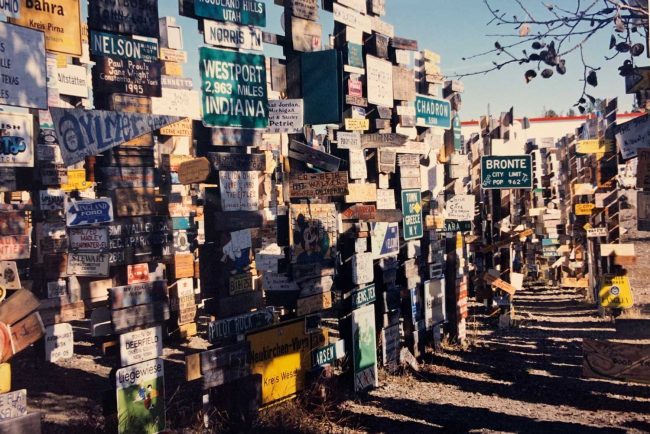
“It’s no longer as isolated. It’s one important stop to Alaska,” Lindley says, his own relative isolation in Danville back then lessened by a new connection to the Internet. His son had just set him up with it, bringing him a continuous stream of email from fans and news of the forest’s new growths. He’d made it back there only once, on the forest’s 50th anniversary in 1992.
The metal signs of city names or road signs or license plates or mere lists of visitors sometimes engraved on frying pans are nailed on post after post in a gauntlet of civic pride from Kalispell to New Zealand. “Welcome to Eugene: Park Free,” “Welcome to Corvallis: Drive Carefully.” Webster, N.Y., is where “Life is Worth Living,” Vidalia is the “City of Progress,” not to mention “No Dumping By Order of North Salt Lake” or “Culver Shuttle Disconnected Take B-35 Bus at 3rd Av Get Subway Transfer from Bus Operator.”
“We supply the post, you bring up the sign,” Diana Raketti told me at the visitor center. “If you need to borrow a hammer, we have a hammer. If you need a nail, we have nails. But it’s up to you to put up your sign.” As in a forest, the posts are constantly changing. When a sign becomes unreadable, it’s pruned, leaving a hole to be filled in by new growth.
“We don’t want to become an organized thing,” she tells me, though the place seemed to me as systematic as it was memorializing, a sort of Arlington Cemetery of world geography. There is longing in signposts removed from their most obvious function at roadside and elevated here so equally, making New York City as great or as humble as Hill City, Kansas, making Havana as admirable as Prague, Sebring as historic as Istanbul. These signs all bunched up and on top of each other without sound or grievance, this forest where every sign belongs and boundaries no longer do, is finally peace on earth—it’s finally what every Miss Universe contestant ever dreamed of—even if the signposts are grave markers to unbridgeable distances.
*
It sounds ridiculous, but it happens every time I leave the country. After a few days away from the United States something clicks and I become uneasy with the absence of Americans, even irritated by it. I don’t know exactly what it is, although it can be as simple as the feeling that in the States rampant friendliness really is a national treasure, or that the solution to any problem is an 800 call away. I couldn’t find working phones most of the time in Canada, and my cell didn’t work there.
For a moment at a road-repair stop the woman regulating traffic with a stop sign sounded American. I asked her if she was, more to hear an American speak than to make conversation with her. But no, she said she was Canadian, born and raised in Whitehorse. I’d done the same in a roadside restaurant, literally eavesdropping on conversations so I could pick up a Southern accent, Queens or Brooklyn would have done just as well, even New Jersey–I was desperate–but nothing. The visitors were gone. Canadians, laconic and tired of strangers, had reclaimed their country. I’d have to wait a few days to hear the sweet tongue of federal customs agents.
Whitehorse is the capital of the Yukon, a former company town clanging with memories of gold, silver, copper and zinc mining. I wasn’t after anything so precious but a tryst with copper. I needed a two-minute connection for a download, having gone three days since Pink Mountain without contact with email, people or traffic lights. White Horse had a single traffic light and almost as few people. Even on the way up, before the snows, the people I spoke with had already set their metabolism to Winter, their suspicions to Defcon 4. It had now gone to 2. I was offering $5 for a one-minute call to the States. One hotel host wouldn’t let me–go figure–another couldn’t understand why I couldn’t use the payphone, as if they’d never heard of dial-up connections.
When I was about to give a local matron $18 for an RV hook-up for the night, she, too, refused to let me use her phone the moment I uttered the word “computer,” even though I was letting her name her price. “Charlie doesn’t allow that,” she said. “He’ll be back soon. You can talk to him.” Maybe too many people had downloaded the Starr Report, compromising Charlie’s standing with the Canadian Committee for the Propagation of Virtue and the Prevention of Vice. These Charlies, unimaginable in travels below the 49th Parallel, were not endearing me to the Klondike.
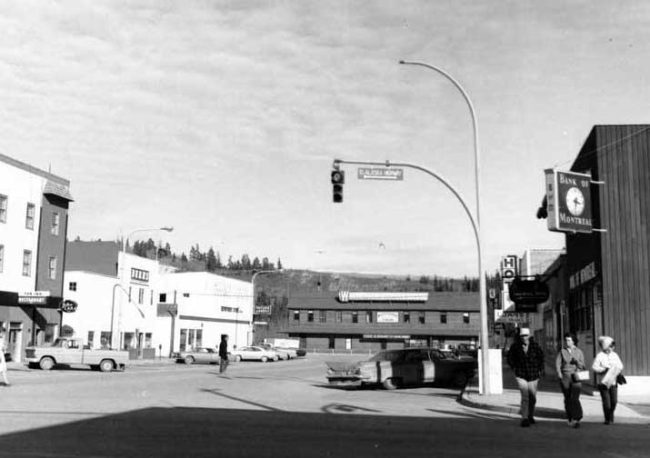
I found The Yukon News, thinking fellow-journalists would accommodate me. Shuttered. Next door was CBC, the Canadian Broadcasting Corporation. Shuttered. I knocked and banged on the glass windows, from where I could see lit white neon inside, a 1980s-type bulky computer printer next to a computer screen, but no live Canadians. I repeated the same routine at a radio station nearby. Nothing. I called one. “You have reached the KHDN newsroom. Please leave a detailed message with your name and phone number where you can be reached…”
News doesn’t travel the traditional way here because it doesn’t need to. Truckers are the Alaska Highway’s CNN, every pit stop a news flash. Whitehorse’s government building was also shuttered, so was the Canadian Mountain Police’s horseless barn, so was the three-screen cinema showing Dr. Doolittle.
Whitehorse was beginning to look like the final scene of “On the Beach” after the cloud from a global thermonuclear war reached Melbourne (the Australian one). My depression felt like radiation sickness. I drove on.
*
A risky night on the shores of the Tetsa River lifted my spirits. With evening falling and the weather still all gravel and slush I left the road and drove into Stone Mountain Provincial Park. No visitors, no attendants (you filled out a card and left your dollars on the honor system at the entrance), no cell signal, no electricity, only eerie sounds of wildlife and the distant gurgles of the river, which I was too spooked to hunt down.
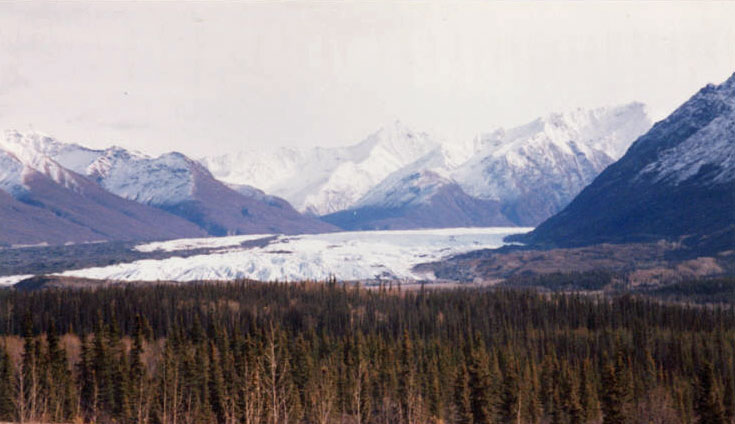
I was exhausted from the day’s beauty. It would pierce through the weather in unexpected flashes, like the mountains around the turquoise waters of Muncho Lake and their chasms of white rocks and glacier milk spilling into valleys. I’d stop to take pictures, but pictures couldn’t capture the virgin beauty of so much geological glory. I felt like I was driving through the scene of an uncommitted crime. What developer won’t sooner or later resist that lake rim, a setting made to order for a Miami Beach investor who’ll know just where to plant Muncho Mall and a Margaritaville Hotel? If the shores of Muncho Lake weren’t being rezoned for development just yet, climate change was preparing the way. There were fewer glaciers than dried up glacier beds, and a lot less snow than there should have been here this time of year, when only ice-road truckers should be on the road.
I spoke too soon. When I woke up the next morning the trees, the forest, the park, the road had all disappeared. Thick snow and ice covered everything. The van was an igloo. I nearly banked it into a ditch as I backed out, yet another close call that could have left me without help, then guessed my way back to the highway in near-zero visibility. I’d overstayed my welcome in Canada.
I turned on the audio of the Lewis and Clark journals I’d been listening to in preparation for my piece on Montana. They were just reaching the headwaters of the Missouri, and Lewis was concerned about Clark’s constipation: “Capt. C. thought himself somewhat bilious and had not had a passage for several days.” I was bilious for different reasons, and I was desperate to be back in the States.
Back at Pink Mountain Brian Burger and I had a shot of whiskey to make the bad news go down easier: “It’s like this clear down to Dawson Creek,” he said of the weather. “It’s supposed to clear late Sunday and be nice again next week.” I had to be in Montana by Sunday. A trucker came in and cussed the weather. “I’m not a happy camper,” he told everyone and no one. He was the one I’d just seen a few miles back straining to put chains on his 26-wheeler. I wasn’t a happy camper either until the van started shedding ice skin after Fort St. John.
Two days later I reached Edmonton with the setting sun under clear skies. I had a feast at Valentino’s Steakhouse Pizzeria at the West Edmonton mall, then supposedly the largest in the world. That Saturday night it felt a lot more like empty Whitehorse. I took in a movie just to hear those American accents again–“Lethal Weapon 4,” all seats $1.50–then thought better of spending another night on Canadian soil.
It was midnight. The American border was 400 miles away. Alberta, that rich, reactionary, unhappy province looking to secede from Canada, is as dull as the flatter parts of eastern Nebraska, but my spirits soared as I drove on Highway 2, the traffic quickly thinning, a gibbous moon keeping me company in a cloudless sky and natural gas stacks burning up the horizon like farewell flares. The road was again as empty as on the Alcan even through zonked out Calgary. It was dry all the way, clearly marked, a ribbon unfurling toward home. I reached the border at 5 in the morning.
It was CLOSED.
A simple horizontal pole-like gate and a stop sign slung across the road reverberated red and white in my high beams. There was no one around, on either side. Another sign said the border would open at 7, as if America were just another coffee shop.
I drove back a mile, pulled by the side of the road, watched the moon disappear behind the peaks of Glacier National Park, and fell asleep.





























Denali says
Thank you Pierre – you have done the road justice and have reminded me of the many reasons I went north. I have traveled the Highway seven times. The first in ’78 took me three weeks to get from Dawson Creek to Tok and then Fairbanks. The road was gravel and mud with a few “paved” spots near Whitehorse and Fort Nelson. Unlike you that first rip was one of discovery – yeah, trying to find myself. Just went through a nasty divorce and was totally disgusted with the work-a-day world I thought it would be a good change. I had hiked the Appalachian Trail twice so I was pretty confident in my ability to make the trip. And again unlike you, I did not find myself longing for an American voice or any voice for that matter. I craved the solitude. By the way, I finally did ‘find myself’ the day I stepped on that old wooden Halibut schooner in Seward. The sea is an awesome place.
So thank you for the memories. I know you can never go home again, but it might be time to load up the truck and make that drive once more before they plant a McDonald’s at Muncho Lake.
Geezer says
Pierre:
Your writing is superb—it’s envy-inducing!
This series of articles reminds me of childhood memories with Walter Cronkite saying: “and you were there.”
You have shared your life and exploits with us over the years—THANK YOU.